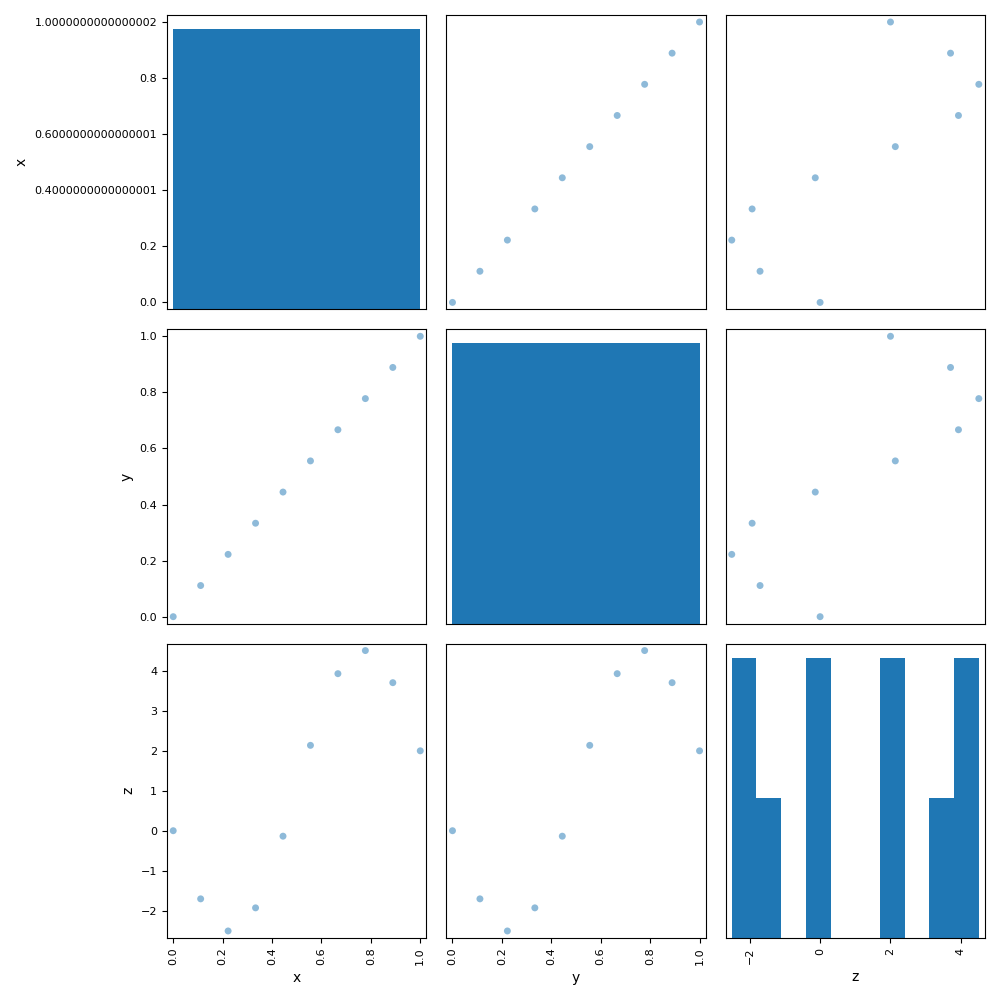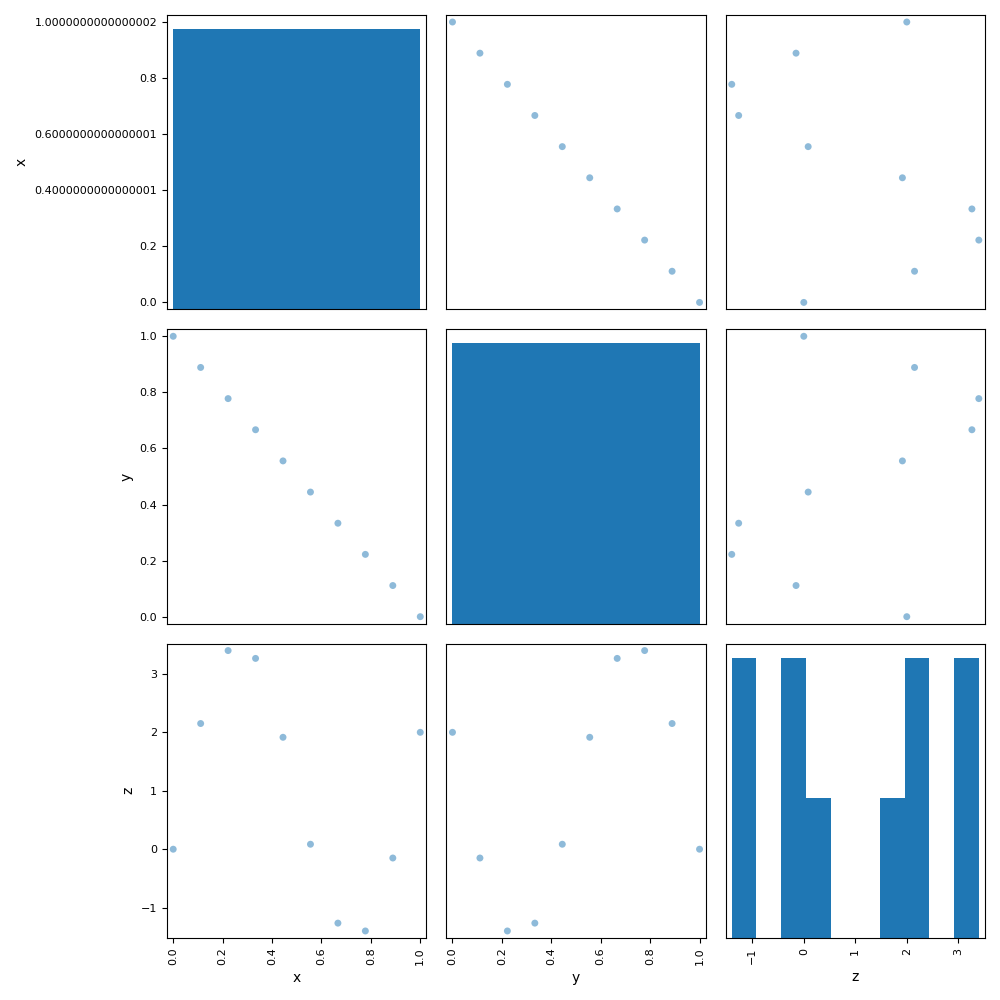Note
Click here to download the full example code
Diagonal design of experiments¶
Here is an illustration of the diagonal design of experiments (DOE)
implemented by the DiagonalDOE class
and used by the ScalableDiagonalModel.
The idea is to sample the discipline by varying its inputs proportionally
on one of the diagonals of its input space.
from __future__ import absolute_import, division, unicode_literals
from future import standard_library
from gemseo.api import (
configure_logger,
create_design_space,
create_discipline,
create_scenario,
)
configure_logger()
standard_library.install_aliases()
Create the discipline¶
First, we create an AnalyticDiscipline
implementing the function: \(f(x)=2x-3\sin(2\pi y)\)
and set its cache policy to "MemoryFullCache".
discipline = create_discipline(
"AnalyticDiscipline", expressions_dict={"z": "2*x-3*sin(2*pi*y)"}
)
discipline.set_cache_policy("MemoryFullCache")
Create the design space¶
Then, we create a DesignSpace
where \(x\) and \(y\) vary between 0 and 1.
design_space = create_design_space()
design_space.add_variable("x", l_b=0.0, u_b=1.0)
design_space.add_variable("y", l_b=0.0, u_b=1.0)
Sample with the default mode¶
Lastly, we create a DOEScenario
and execute it with the DiagonalDOE algorithm
to get 10 evaluations of \(f\).
Note that we use the default configuration:
all the disciplinary inputs vary proportionally
from their lower bounds to their upper bounds.
scenario = create_scenario(
discipline, "DisciplinaryOpt", "z", design_space, scenario_type="DOE"
)
scenario.execute({"algo": "DiagonalDOE", "n_samples": 10})
dataset = discipline.cache.export_to_dataset()
dataset.plot("ScatterMatrix", save=False, show=True)

Out:
<gemseo.post.dataset.scatter_plot_matrix.ScatterMatrix object at 0x7fc29e192b80>
Sample with reverse mode for \(y\)¶
We can also change the configuration
in order to select another diagonal of the input space,
e.g. increasing \(x\) and decreasing \(y\).
This configuration is illustrated in the new ScatterMatrix plot
where the \((x,y)\) points follow the \(t\mapsto -t\) line
while the \((x,y)\) points follow the \(t\mapsto t\) line
with the default configuration.
discipline.cache.clear()
scenario = create_scenario(
discipline, "DisciplinaryOpt", "z", design_space, scenario_type="DOE"
)
scenario.execute(
{"algo": "DiagonalDOE", "n_samples": 10, "algo_options": {"reverse": ["y"]}}
)
dataset = discipline.cache.export_to_dataset()
dataset.plot("ScatterMatrix", save=False, show=True)

Out:
<gemseo.post.dataset.scatter_plot_matrix.ScatterMatrix object at 0x7fc29e221250>
Total running time of the script: ( 0 minutes 1.278 seconds)
